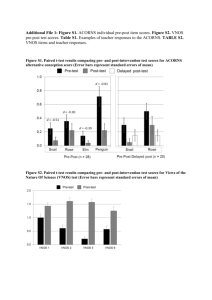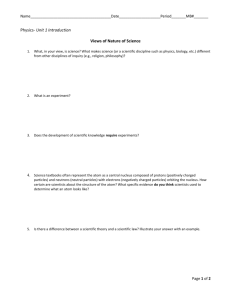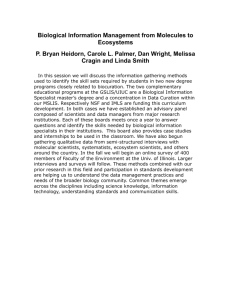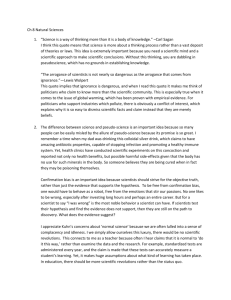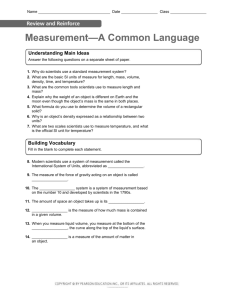NatureOfScienceHW2 - subfreshmanhomework2015-2016
advertisement
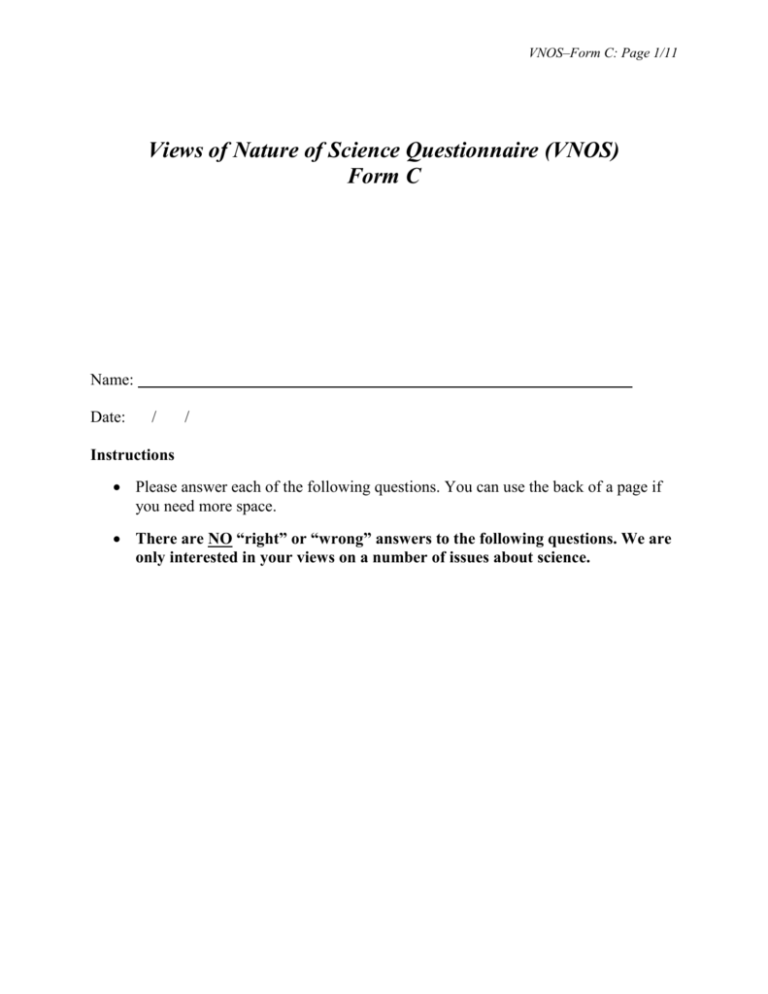
VNOS–Form C: Page 1/11 Views of Nature of Science Questionnaire (VNOS) Form C Name: Date: / / Instructions Please answer each of the following questions. You can use the back of a page if you need more space. There are NO “right” or “wrong” answers to the following questions. We are only interested in your views on a number of issues about science. VNOS–Form C: Page 2/11 1. What, in your view, is science? What makes science (or a scientific discipline such as physics, biology, etc.) different from other disciplines of inquiry (e.g., religion, philosophy)? VNOS–Form C: Page 3/11 2. What is an experiment? VNOS–Form C: Page 4/11 3. Does the development of scientific knowledge require experiments? If yes, explain why. Give an example to defend your position. If no, explain why. Give an example to defend your position. VNOS–Form C: Page 5/11 4. After scientists have developed a scientific theory (e.g., atomic theory, evolution theory), does the theory ever change? If you believe that scientific theories do not change, explain why. Defend your answer with examples. If you believe that scientific theories do change: (a) Explain why theories change? (b) Explain why we bother to learn scientific theories? Defend your answer with examples. VNOS–Form C: Page 6/11 5. Is there a difference between a scientific theory and a scientific law? Illustrate your answer with an example. VNOS–Form C: Page 7/11 6. Science textbooks often represent the atom as a central nucleus composed of protons (positively charged particles) and neutrons (neutral particles) with electrons (negatively charged particles) orbiting that nucleus. How certain are scientists about the structure of the atom? What specific evidence do you think scientists used to determine what an atom looks like? VNOS–Form C: Page 8/11 7. Science textbooks often define a species as a group of organisms that share similar characteristics and can interbreed with one another to produce fertile offspring. How certain are scientists about their characterization of what a species is? What specific evidence do you think scientists used to determine what a species is? VNOS–Form C: Page 9/11 8. It is believed that about 65 million years ago the dinosaurs became extinct. Of the hypotheses formulated by scientists to explain the extinction, two have enjoyed wide support. The first, formulated by one group of scientists, suggests that a huge meteorite hit the earth 65 million years ago and led to a series of events that caused the extinction. The second hypothesis, formulated by another group of scientists, suggests that massive and violent volcanic eruptions were responsible for the extinction. How are these different conclusions possible if scientists in both groups have access to and use the same set of data to derive their conclusions? VNOS–Form C: Page 10/11 9. Some claim that science is infused with social and cultural values. That is, science reflects the social and political values, philosophical assumptions, and intellectual norms of the culture in which it is practiced. Others claim that science is universal. That is, science transcends national and cultural boundaries and is not affected by social, political, and philosophical values, and intellectual norms of the culture in which it is practiced. If you believe that science reflects social and cultural values, explain why. Defend your answer with examples. If you believe that science is universal, explain why. Defend your answer with examples. VNOS–Form C: Page 11/11 10. Scientists perform experiments/investigations when trying to find answers to the questions they put forth. Do scientists use their creativity and imagination during their investigations? If yes, then at which stages of the investigations you believe scientists use their imagination and creativity: planning and design, data collection, after data collection? Please explain why scientists use imagination and creativity. Provide examples if appropriate. If you believe that scientists do not use imagination and creativity, please explain why. Provide examples if appropriate.
